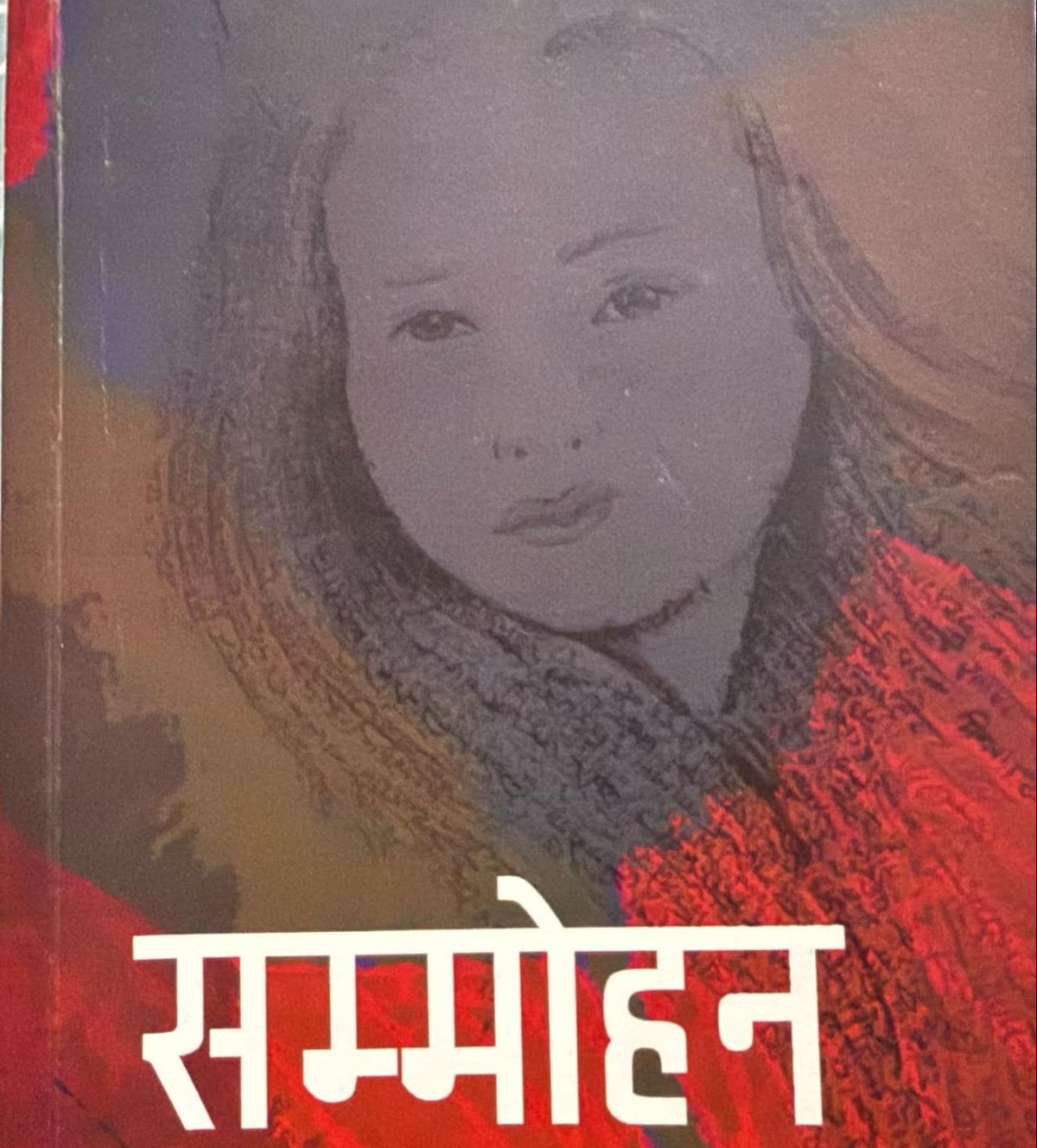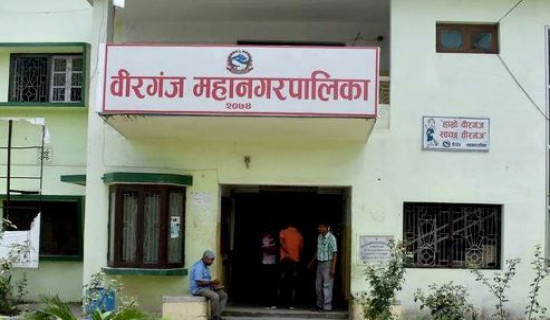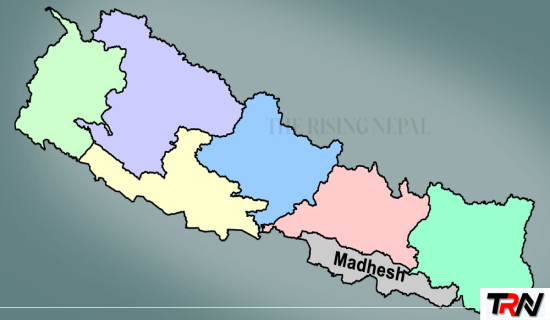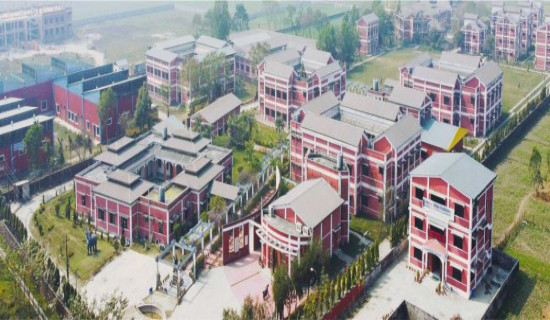- Tuesday, 24 June 2025
Sammohan: an exploration of women's empowerment and today's society
Asmita Khanal
Radhika Kalpit’s "Sammohan" is a remarkable collection of 14 stories that intricately explores the theme of women’s empowerment and truth of today’s society. Each story delves deep into the struggles, triumphs, and eventual realizations of women who have fought against the oppressive constraints of a patriarchal society. Kalpit’s narrative style is gripping, and her characters are nuanced and authentic, reflecting the diverse lives of women who, despite being subjugated by systemic gender inequality, find ways to reclaim their power and voice.
"Sammohan"
is an empowering exploration of women’s lives in a society dominated by patriarchal
structures. Each story intricately portrays the complexities of being a woman
and the personal revolutions that take place when one challenges the norms set
by society. Kalpit’s writing is not only compelling but also thought-provoking,
urging readers to reflect on how deeply ingrained gender biases influence every
aspect of women’s lives—from relationships to careers and beyond. Through her rich storytelling, Kalpit explores the rigid
societal norms, values, and the status of women in a deeply traditional
culture. Each story is a window into the lives of women who, despite being
confined by cultural constraints, find ways to challenge and transcend their
circumstances.
The central
theme of ‘Sammohan’ revolves around the idea of women’s voice, as Kalpit
beautifully portrays the emotional, psychological, and social struggles women
face in a today’s society. The book explores women’s roles in family, marriage,
work, and society at large, shedding light on how these roles are often
dictated by age-old customs that suppress their individuality and autonomy.
Kalpit’s
characters are multidimensional and reflect a wide range of experiences. Some
stories depict women who, through their resilience, assert their right to
choose their own paths, while others explore the emotional toll of adhering to
societal expectations. These women—strong, defiant, and, at times, resigned
reveal the complex layers of identity, freedom, and the
unyielding desire for change in a society that continuously tries to limit
their potential.
The stories
are written with sensitivity and keen insight, capturing the essence of Nepali
traditions while also questioning and challenging them. Kalpit’s storytelling
style is engaging, with her characters coming alive through rich dialogue and
relatable situations. The book’s themes are universal, resonating not only with
Nepali readers but also with anyone who has grappled with the restrictions
imposed by cultural and societal norms.
“Sammohan” is
a celebration of women’s strength, resilience, and ability to redefine
themselves. Kalpit’s masterful narrative compels readers to question the norms
that dictate women’s lives and to consider what true empowerment looks like in
a deeply traditional society. It’s a thought-provoking, emotional, and necessary
read for anyone interested in understanding the intricate balance between
tradition and progress, particularly when it comes to the lives of women.
I have tried to summarize any four
stories here in detail and tried to review overall book in short.
First story 'Chirag' is a poignant and thought-provoking story that explores themes of freedom, love, and personal choice. The narrative centers around a strong-willed woman who cherishes her childhood memories with a horse named Chirag. She views this horse as a symbol of her independence and the unspoken bond of companionship, something that remains untainted by societal expectations. Throughout the story, she remains steadfast in her decision not to marry, valuing her autonomy above all else. However, as time passes, she reluctantly marries but finds herself constantly longing for the presence of Chirag, whose absence leaves a deep void in her life.

Next story "Malati Mis" tells
the story of Malati, a woman who falls in love with a married man. Despite her
deep feelings, she understands the complexities of his married life and does
not want to disrupt it. In a heart-wrenching decision driven by her desire to
be a mother, Malati chooses to have a child through IVF, using the man’s sperm,
while maintaining her distance from him. She disappears from his life after the
conception, choosing to raise the child on her own, never seeking any further
involvement from him. The story explores the emotional complexity of one-sided
love, the strength of Malati’s character, and her determination to fulfill her
maternal longing while respecting the boundaries of the man she loves. It
highlights themes of sacrifice, love, and the consequences of unconventional
decisions, showing the resilience of a woman who takes control of her own
destiny, even in the face of societal judgment.
"Parichyand" tells the story
of a young girl in a traditional Nepali society who experiences her first
menstruation cycle. According to conservative cultural rituals, during
menstruation, a girl is considered impure and is forbidden from touching
various things like God, the kitchen, animals, rooms, and plants, and is
confined to a room where sunlight does not enter. The girl, however, challenges
these beliefs, not fully accepting the cultural taboos placed on her. Curious
and rebellious, she decides to test whether the ritual holds any truth. She
touches everything she is told to avoid—her family’s sacred idols, the kitchen,
the animals, and even plants—wondering if she will be punished by God or face consequences
for defying the rules. Her story is a silent act of defiance, questioning blind
traditions and exploring the conflict between personal belief and societal
expectations. Through this act of rebellion, the girl seeks empowerment,
symbolizing a desire for freedom from oppressive customs. The story highlights
the struggle of young girl in conservative societies who question restrictive
norms and strive for a sense of autonomy, even in the face of cultural
resistance.
"Abhisapta Aaagat" is a
poignant story about a girl who grew up in a distant, emotionally disconnected
environment, raised by busy parents and sent to a hostel from an early age, she
was never close to her relatives and was unaware of many family dynamics. As
she grew older, she moved abroad, married a man, and had a child. However, her
parents remained unaware of the details of her life abroad. When the girl
eventually confides in her parents, revealing that she had married and had a
child, they are shocked to learn that her husband is, in fact, her cousin—a
family member they never imagined she would marry. The revelation is met with
disbelief and anger. Her parents, guided by societal taboos and familial
expectations, demand that she abandons both her child and her husband, urging
her to sever ties with them. Devastated by their reaction, the girl becomes
deeply angered and hurt. She is torn between her love for her family and the
reality of her life choices, which her parents refuse to accept. The story
explores themes of family expectations, cultural taboos, and the emotional
conflict between personal identity and familial duty. It is a powerful
narrative about the struggles of a woman who is forced to choose between the
love she has built for herself and the rigid values imposed by her parents.
The women in
these stories are not mere victims of their circumstances; they are survivors,
rebels, and, most importantly, warriors. Each story highlights the importance
of self-realization, independence, and the courage to stand up against the systems
that hold women back. Kalpit’s characters are incredibly relatable, and their
journeys will inspire readers to question the status quo and work toward a more
equal world.
Radhika Kalpit's Sammohan is an evocative
collection that brilliantly highlights the strength and complexity of women’s
experiences within the confines of conservative Nepali society. With its rich,
layered storytelling, this book serves as both a mirror and a challenge to the
societal structures that attempt to silence women. It is a must-read for anyone
looking to explore the intersection of culture, gender, and empowerment.
The book is a must-read for anyone interested in the ongoing fight for women’s rights and the power of female agency. With "Sammohan", Kalpit delivers a resounding message: women are not just survivors, but leaders who can and will reshape the world.
(The writer is an Architect/Urban Planner of the Bharatpur Metropolitan City Office)
















